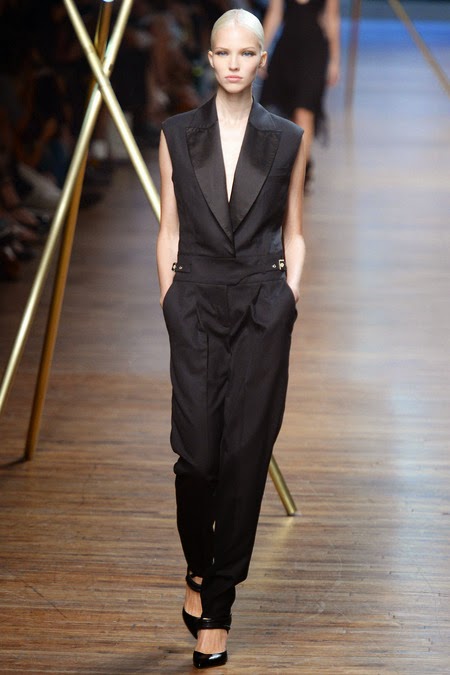15:53
23:31
HAUTE COUTURE - DAY 3
23:31From left: Maison Martin Margiela, Elie Saab, Jean Paul Gaultier, Vionnet and Valentino
01:13
HAUTE COUTURE - DAY 2
01:13From left: Chanel, Bouchra Jarrar, Ulyana Sergeenko, Armani Privé and Alexandre Vauthier
13:26
HAUTE COUTURE - DAY 1
13:26From left: Atelier Versace, Schiaparelli, Christian Dior, Giambattista Valli and Alexis Mabille They say Haute Couture is dead. It fi...
 |
| From left: Atelier Versace, Schiaparelli, Christian Dior, Giambattista Valli and Alexis Mabille |
They say Haute Couture is dead.
It first died in 1957 along with Christian Dior, one of the best and brightest
designers of his generation, who had single-handedly brought back to life
French fashion with his “new look” after the Second World War. It died again
with Yves Saint Laurent’s last show in 2002, when the designer – who had been
Christian Dior’s dauphin – forever left the runway and the fashion house that
he had created. The same happened in 2007 when Valentino, the last remaining
designer of that generation of couturiers who had shaped and formed our idea of
fashion and couture, retired after celebrating the 45th anniversary
of his label. It probably died again in 2008, when our economy was crashed by
yet another financial crisis and the few people who actually bought Haute
Couture became even rarer. Yet, here we are, still talking about couture, still
fascinated with its beauty, its construction, its impossibly elaborated fabrics,
still irremediably drawn by the unspoken promise that what we are about to
witness is indeed an art form, that those walking down the runway are not just
incredibly expensive clothes but art pieces. It’s this unspoken promise that
has proven to be Haute Couture’s driving force, the reason why, after more than
one-hundred years and countless so called “deaths”, Haute Couture still stands,
why, for the extent of twenty-something minute show, we gladly forget that what
is being presented doesn’t really have to do with most women’s modern life and
just enjoy the spell created by the designer. Couture week it’s not the time to
think how wearable that garment is or how much that other garment is going to
cost, it’s a time when the best designers in the world present us with
something to dream about so we should just close our eyes and start dreaming.
17:15
WORKING CLASS
17:15From left: A. Détacher, Alexis Mabille, Gianfranco Ferrè, Jason Wu, Lanvin, Stella McCartney First created in 1920 by Italian futu...
 |
| From left: A. Détacher, Alexis Mabille, Gianfranco Ferrè, Jason Wu, Lanvin, Stella McCartney |
First created in 1920 by Italian futurist artist Thayaht (his real name was Ernesto Michahelles) the “TuTa” was supposed to become “the most innovative, futuristic garment ever produced in the history of Italian fashion”. Its simple and clean lines made it perfect for both men and women, rich or poor, for work or for a cocktail party. The TuTa, as Thayaht envisioned it, was going to become the one and only garment a person was ever going to need, making all previous and future articles of clothing useless. Unfortunately, Thayaht’s plan was just a tad too big and his precious TuTa ended up becoming the uniform of the working class.
 |
| Jason Wu |
Thayaht’s vision wouldn’t be entirely accomplished if there wasn’t an overall even for a party but Lanvin and Zero Maria Cornejo are not about to let that happen: their shiny, comfy, metallic overalls make for the ultimate party garment. Moreover, the fact that even Valentino presented us with minimal, perfect, Valentino-style overalls might just mean that good, old Thay –yes, I refuse to write one more time a name that I can’t even manage to pronounce right- was right: the TuTa is the most innovative, futuristic garment ever produced.
















